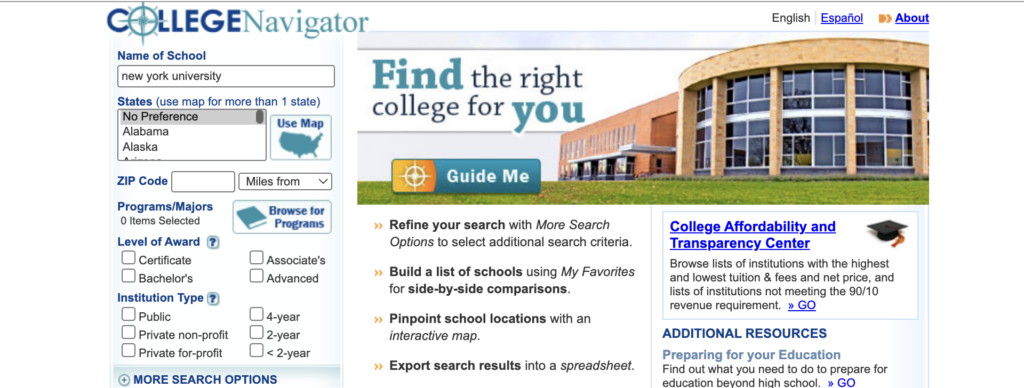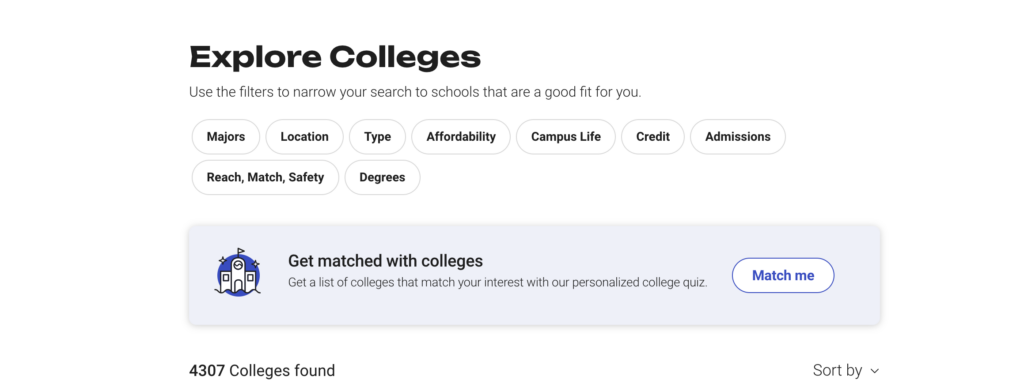How to Build Your College List: Target / Reach / Safety Strategy
Table of Contents
Why a Strategic College List Matters
Your college list isn’t just a selection of schools—it’s your roadmap to college admissions success. Constructing a thoughtful, balanced list can streamline your application process, improve acceptance chances, and align your goals with opportunity.
For students navigating the U.S. admissions landscape, distinguishing between Reach, Target, and Safety schools ensures your colleges list in USA isn’t just hopeful—it’s practical, data-driven, and tailored to your strengths.
Understanding Reach, Target & Safety Schools
Success starts with balance. Most effective college lists categorize schools into:
Reach schools: Institutions where admission is a stretch—your profile is slightly below or on par with the average accepted student.
Target schools: Colleges where your stats align well—admission chances are solid but not guaranteed.
Safety schools: Places where your credentials surpass most accepted students—offering a nearly certain backup plan.
This mix ensures you aim ambitiously while securing realistic admission outcomes.
Key Dimensions for Choosing Schools
Building a strong college list means looking beyond rankings. Consider these five essential factors:
Location & Campus Setting: Urban vs. suburban, regional weather, distance from home, and transportation.
Academics & Majors: Does the school specialize in your intended field? Are there research or dual-degree opportunities?
Cost & Financial Aid: Understand tuition, aid availability, and net price estimates.
Student Life & Culture: Clubs, Greek life, dorming, diversity levels—find places that match your style.
Available Resources: Faculty ratio, internship pipelines, alumni networks, and post-grad support.
These elements determine not just your admission success, but also your long-term happiness and growth.
How Many Schools Should You Include in Your College List?
When crafting a college list, balance is key—not just in school types (Reach, Target, Safety), but also in total number. Based on expert guidance and years of admissions strategy, a smart list typically includes 10 to 12 schools.
🔍 IvyMax’s Recommendation
At IvyMax, most families typically choose to apply to around 10 schools, which allows for enough strategic range without overwhelming the student. For students seeking maximum flexibility or aiming at highly competitive programs, the list may expand to up to 20 schools—but only when time, resources, and application quality can be sustained across all.
Suggested Breakdown
3–4 Reach Schools
- These are highly competitive colleges where your academic stats (GPA, SAT/ACT, etc.) fall below or near the school’s middle 50% range.
- Admission is uncertain, but possible—especially with strong essays or unique experiences.
- Example: Ivy League, Stanford, or top-tier private institutions.
4–5 Target Schools
- Your grades, test scores, and extracurriculars are well-aligned with the school’s typical admitted student profile.
- You have a solid chance of admission, especially if your application materials are strong and complete.
- These schools are often your best “fit”—academically, socially, and financially.
2–3 Safety Schools
- Your academic performance is above average for admitted students at these schools.
- You are highly likely to be accepted, and they may offer good scholarships or honors programs.
- These schools serve as a reliable foundation—places you’d still be happy to attend.
Tips to Structure Smartly
Match quantity with quality: Don’t apply to more schools than you can handle—each app should be tailored and polished.
Factor in finances: Include at least one financial Safety with strong aid history or scholarships.
Customize with data: Use tools like College Navigator and Niche to align GPA/test scores with school stats.
Consult your IvyMax counselor: We help you finalize a personalized strategy with Reach, Target, and Safety balance based on your profile, goals, and family input.
Recommended Tools to Build Your College List
Here are three reliable tools:

1. Niche
Real student reviews on academics, living, outcomes
Auto-categorizes into Reach, Target, Safety based on your profile
Ideal for initial school discovery and personality match

2. College Navigator (NCES)
U.S. government–sourced data: costs, acceptance rates, graduation, demographics
Allows side-by-side comparisons across criteria
Perfect for objective filtering and analysis

3. College Board Search
Filter by major, location, test policies, and deadlines
Integrated with SAT/AP systems
Useful for aligning your academic record with school requirements
How to Use These Tools: A 4-Step Approach
Use Niche to browse and auto-sort based on your interests and stats.
Refine using College Navigator by comparing acceptance rates, costs, and aid opportunities.
Cross-check in College Board Search for application deadlines and program specifics.
Organize everything into a spreadsheet, categorize schools, and pick your final list.
IvyMax Program – Strategic, Personalized, Effective
At IvyMax, every student begins with a personalized college list created by your dedicated counselor, based on your grades, goals, and interests. We then refine this list together with you and your family—balancing Reach, Target, and Safety options—so that it’s both strategic and realistic.
By combining data-driven insights with expert advising, IvyMax ensures your list is tailored, achievable, and reflective of your full potential.
🎯 Join IvyMax’s College Application Program today and let us help you build a college list that maximizes your success!
Frequently Asked Questions About College Lists
What should I put on my college list?
Your college list should include a mix of Reach, Target, and Safety schools.
Look for colleges that align with your academic profile, intended major, financial needs, campus preferences, and personal goals. Don’t just choose based on rankings—prioritize fit, affordability, and opportunity.
What is a balanced college list?
A balanced college list includes 8–12 schools spread across Reach, Target, and Safety categories.
Typically, that means 3–4 Reach schools, 4–5 Target schools, and 2–3 Safety schools. This approach increases your chances of admission while ensuring you have strong, realistic options.
How do I create a college list?
Start by researching schools using tools like Niche, College Navigator, or College Board.
Then, compare their academic requirements, majors, cost, and location. Categorize each school as Reach, Target, or Safety based on your GPA, test scores, and profile. Adjust the list with input from your school counselor—or work with IvyMax to receive a personalized strategy.
What is a college short list?
A college short list is your final, narrowed-down selection of schools you actually plan to apply to.
It typically includes 8–12 well-researched colleges chosen from your broader list. These schools should represent a range of selectivity levels and reflect your most serious and best-fit options.
Start Smart, Apply Confidently
Your college list is more than logistics—it reflects your aspirations, readiness, and planning. By using the Target/Reach/Safety model and tools like Niche, College Navigator, and College Board, you’ll transform your list into a strategic roadmap.
Start building your colleges list in USA today—and take the first step toward a confident, successful application season.
By submitting this form, you are consenting to receive marketing emails from: IvyMax, 41111 Mission Blvd., Suite 200, Fremont, CA, 94539, https://ivymax.com/. You can revoke your consent to receive emails at any time by using the SafeUnsubscribe® link, found at the bottom of every email. Emails are serviced by Constant Contact
Interested in our program?
Complete the form below and we’ll quickly respond with detailed information, and answers to all your questions!

